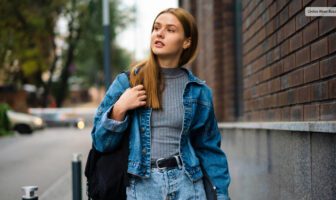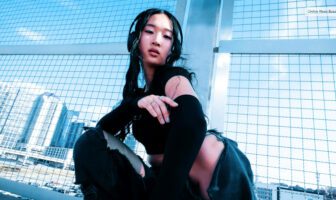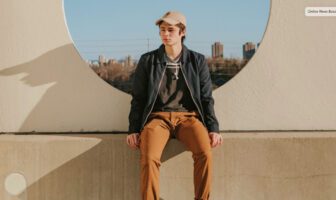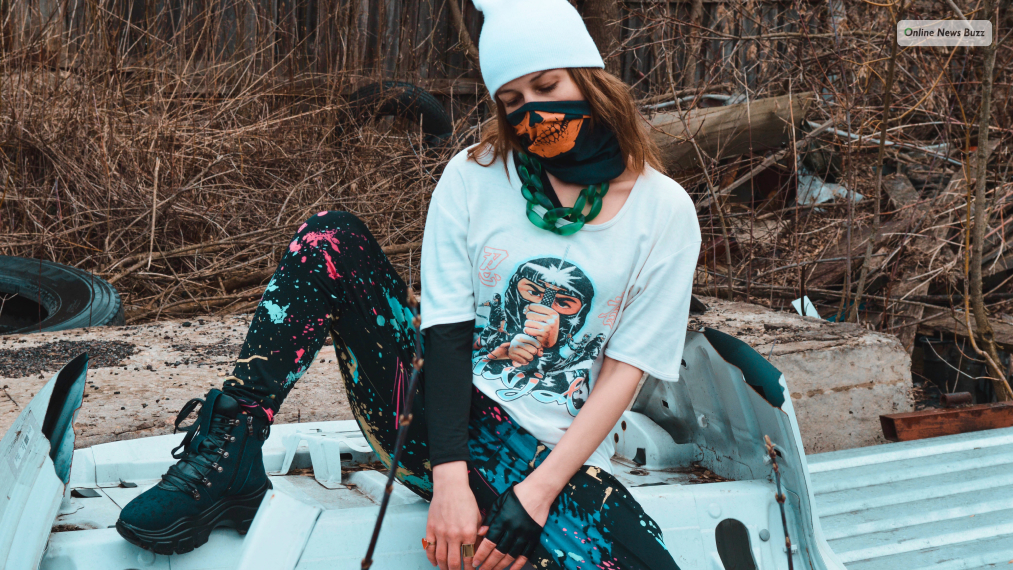
Change of times The 90s had changed. With music changing with technology advancing, change happened in the world. Among all the changes was a shift in fashion- the biggest change being Streetwear.
It started off as a movement that swept through the streets in order to eventually conquer high fashion. So, what did Streetwear do right during the 90s? Let’s break down its origin, distinctive style, and long-term legacy.
The Roots of 90s Streetwear
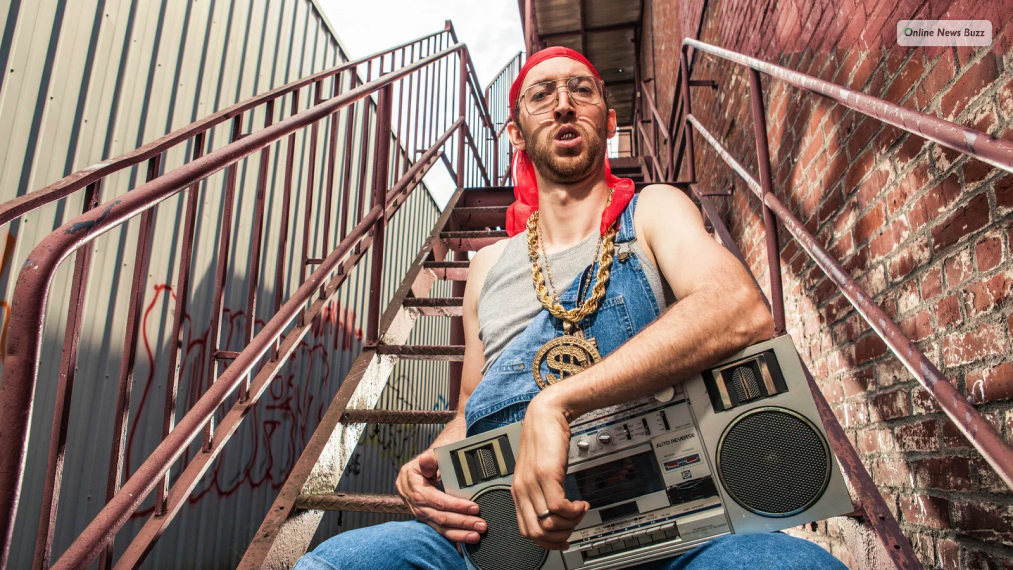
Streetwear was not an overnight phenomenon. It had its roots in the late 80s in skateboarding, hip-hop, and graffiti subcultures.
The 90s saw these cultures explode in cities such as Los Angeles, New York, and Tokyo. The groups did not want to dress in mainstream fashion and wore clothes that were comfortable, functional, and bold.
It was not the case of clothes alone, but this expressed oneself without borders; that was the simplicity- very loose pants and extra-large T-shirts, hoodies, and sneakers, that was something. They displayed rebellion, uniqueness, and culture that spoke without words.
Logomania Redux
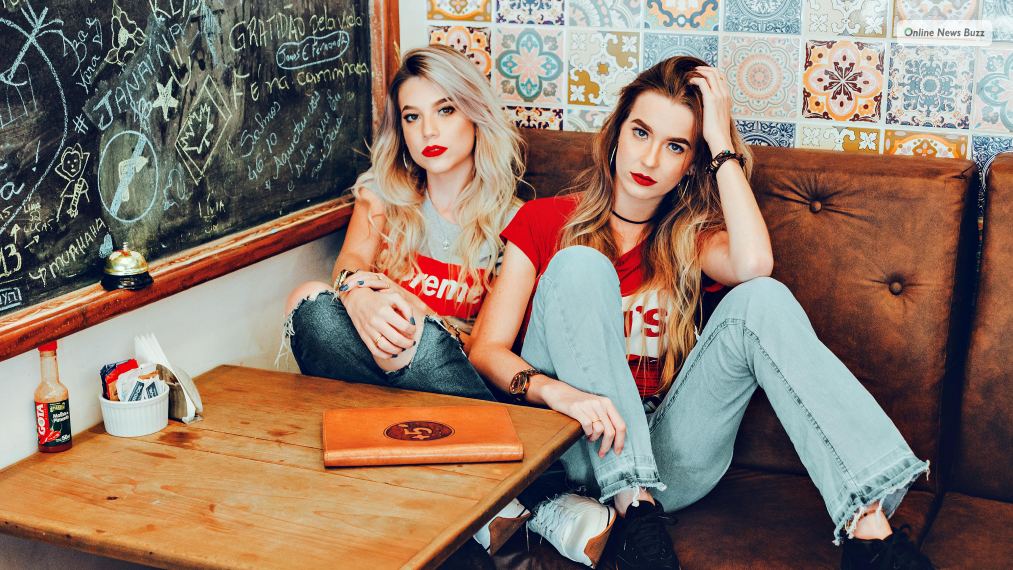
Logomania is one of the most extreme 90s streetwear trends. Clothing stopped serving the purpose of fashion and only became a marker of allegiance to specific brands. A brand seemed to splatter its logo on everything it made, from t-shirts to jackets and sneakers.
The popular brands of that time were Nike, Adidas, Polo Ralph Lauren, and Tommy Hilfiger. The bigger the logo, the more fashionable the brand was.
Having a big logo, clothing became a status symbol for many. It indicated that they belonged to a particular culture or group. Be it the Polo pony on the shirt or the Nike swoosh on the shoes, brands became symbols of style and identity.
Polo Ralph Lauren: The brand’s iconic logo, often sewn onto its shirts, was the staple of Streetwear.
Tommy Hilfiger: Streetwear was full of vibrant colors and logo designs due to brands like Tommy Hilfiger.
Nike: The Swoosh became a recognizable logo, and wearing Nike clothes became a sign of style.
Athleisure Evolution
The 90s also witnessed the rise of athleisure. Athleisure refers to clothes that were designed specifically for sports, and people will wear them casually every day, too.
Athletic brands like Nike and Adidas became an important piece in Streetwear by penetrating into the fashion world itself. Tracksuits, sneakers, and jackets inspired and designed from athletic wear were common dresses.
Athleisure was not only performance but also comfort and style. Nike and Adidas are brands that have turned into cool symbols in the 90s, not only for athletes but for anyone wishing to look stylish while staying comfortable.
Tracksuits: They were popularized by rappers and athletes, and they are a huge part of the athleisure trend.
Sneakers: Of course, from Nike and Adidas, one learns about such popular models as Air Jordans and Stan Smiths.
Jackets: Windbreakers and sporty jackets were must-haves during this time.
Vintage Vibes
In short, a love for vintage was another defining feature of the ’90s streetwear: thrift stores and secondhand shops became the go-to place for individual pieces no one else had at those times. It defined how that decade shifted from mass-production clothing to wanting clothing symbolizing authenticity.
Vintage clothing wasn’t just about finding old items—it was about nostalgia. People loved the idea of wearing something with a history. Whether it was a retro sports jacket or a pair of vintage Levi’s jeans, the look of the 90s was all about mixing new and old.
The Utility Aesthetic
Utility style also played a huge role in 90s Streetwear. Clothes inspired by work clothes and military styles became super trendy. Cargo pants, big jackets, and boots are all useful as well as fashionable. It was practical and long-lasting.
Cargo pants are full of pockets. They are practical and good-looking, making them ideal for carrying personal belongings.
Oversized jackets with multiple pockets in a utilitarian fashion soon were all the rage.
Combat boots and other strong footwear came commonly, which were both in vogue and durable. It meant wearing clothes that looked great and functioned great.
Streetwear became a style that added meaning to it since it represented the strength of fashion as well.
Techwear Influence
Techwear developed in the 90s when technology began to progress. It is a mix of high-performance clothing with modern designs. In the 90s, it was not as in-demand as it is now, but some parts of it were already being seen. New materials such as nylon and Gore-Tex began to be part of Streetwear.
Techwear is futuristic because it bases concepts on new ideas and practical applications. Brands experimented with multiple materials and styles in putting together clothes that are both good-looking and functional during rainy or outdoor events.
Just because Techwear did not exactly achieve popularity until later years doesn’t mean the 90s didn’t have such a stage for fashion.
DIY and Individuality
One of the main aspects of Streetwear in the 90s was the DIY culture. Streetwear was about being yourself, and that meant creating your own style. People started to alter their clothes by adding patches, paint, and embroidery to make them unique. This was when the whole concept of wearing your personality really started to hit the streets.
The way people expressed themselves came through their clothing. From spray painting an old jacket to sewing a little patch on, DIY fashion began to be really important with Streetwear. It wasn’t about buying the latest, but it was about what they could make for themselves that would be personal.
Patchwork: They sew patches on jackets, backpacks, and even jeans in a style of apparel.
Ragged dress: Most people tear up their jeans or jackets to appear to be old.
Custom sneakers: they will paint or customize their sneakers that reflect their style.
Key Characteristics of 90s Streetwear
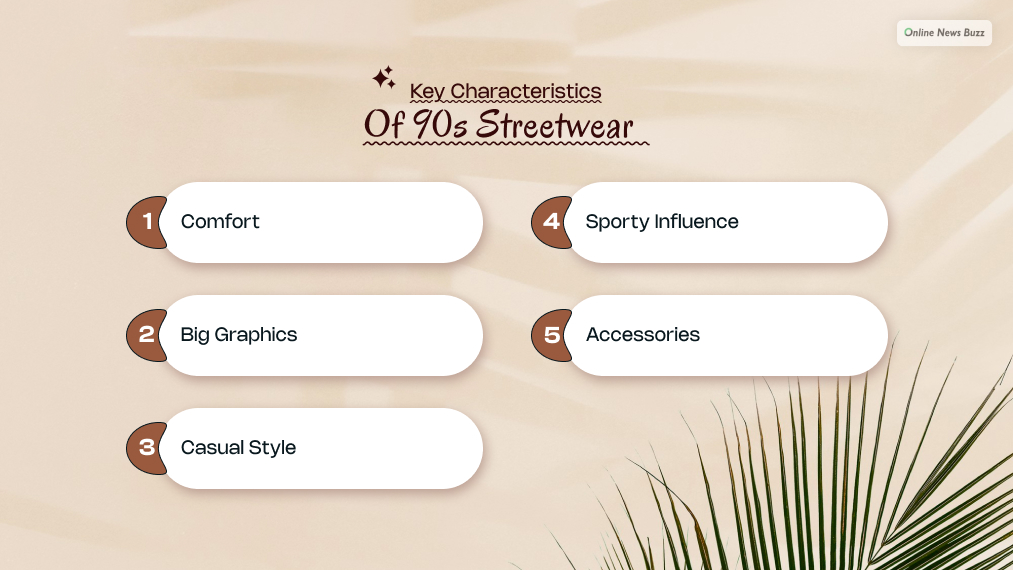
The 90s streetwear look had a few important features. These features shaped the style and made it easy to identify.
Comfort: Comfort had evolved into baggy and loose jeans, T-shirts, and hoodies. Fashion changed, and it stopped being about wearing tight clothes and dressing up.
Big graphics: there were logos, slogans, and graphic designs everywhere on clothes. Images created an impact and made clothing noticeable.
Casual style: Streetwear was about casual, laid-back style. There was no need for dressing up.
Sporty influence: People started to wear sneakers, tracksuits, and sportswear in their street clothes.
Accessories: Cool accessories were in the form of snapback hats, big sneakers, and gold chains.
Iconic 90s Streetwear Brands
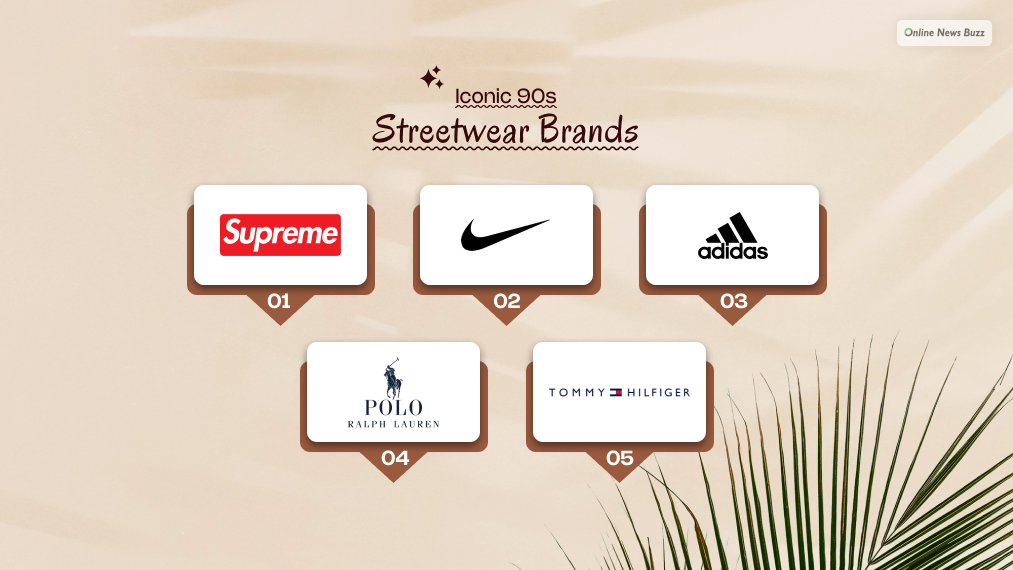
The 90s was the best time for streetwear brands. Most of the famous brands from then are still impacting today.
Supreme: Founded in 1994, Supreme eventually became the leading streetwear brand, known for its iconic, strong logo and special collaborations.
Nike: Nike’s legendary shoes and sportswear were a staple of the 90s street style. The Air Jordans were especially popular.
Adidas: No streetwear from the 90s was complete without a three-stripe Adidas tracksuit and three-stripe Adidas sneakers.
Polo Ralph Lauren: It had the much-coveted line of Polo Ralph Lauren during the 90s with the logo on it.
Tommy Hilfiger: Bright, logo-covered designs were ‘cool’ in street culture of 90’s end.
These brands contributed to the streetwear culture and developed the style of self-expressionism and making a statement.
The Influence of Music and Pop Culture on 90s Streetwear
Music was a very important thing in the rise of 90s Streetwear. Actually, hip-hop was one of the leading factors that changed fashion.
Rappers like Tupac, Notorious B.I.G., and Jay-Z were wearing streetwear brands. This made the brands popular. They did not just influence music; they also influenced fashion. For example, artists in Run-DMC wore Adidas tracksuits with matching sneakers that had their own styles.
It also features characters wearing very famous street clothes, with shows like The Fresh Prince of Bel-Air and movies like Clueless featuring this style. Due to this, the genre caught up.
The Role of 90s Streetwear in Shaping Identity
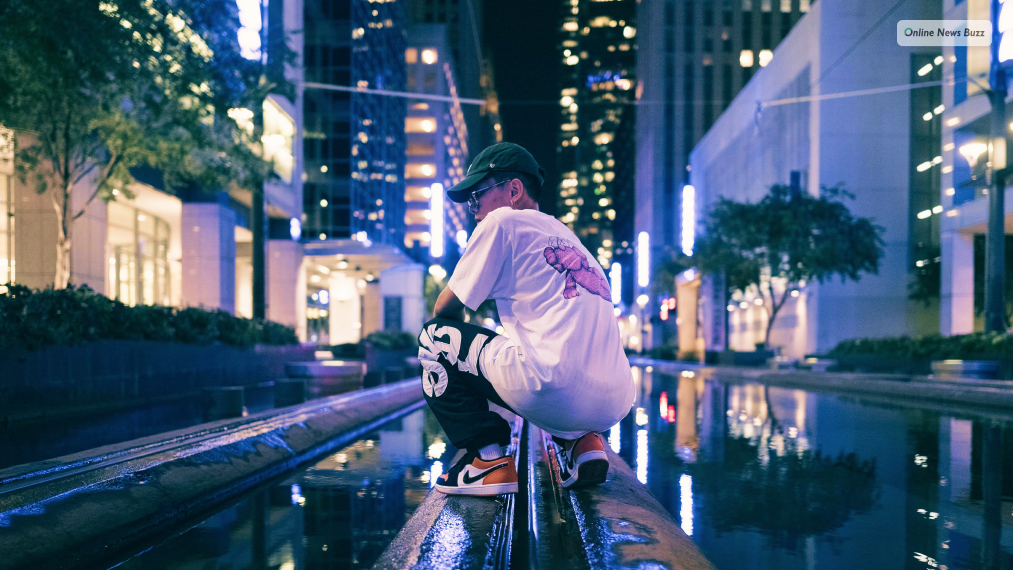
Streetwear in the 90s allowed individuals to express who they were. You wore clothes that meant not only to look great but also to say something to people about who you are. If you loved hip-hop, skateboarding, or just wanted to be different, Streetwear was able to let you do it.
It was a sense of belongingness, the rise of Streetwear. People were able to feel as though they were part of something bigger than themselves by sporting the right brand or style. It became a lifestyle and much more than a fashion decision.
The Legacy and Evolution of 90s Streetwear
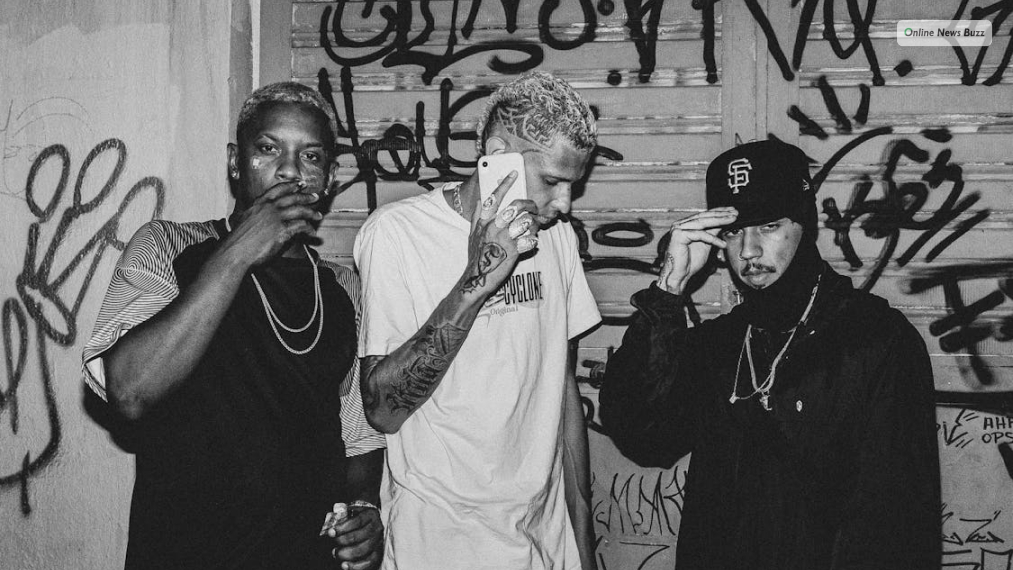
The influence of 90s Streetwear is still felt today. Most of the styles and brands that started in the 90s are still important. Brands like Supreme, Nike, and Adidas are still leading in streetwear culture.
The influence of 90s Streetwear can also be seen in fashion today. Renowned designers such as Virgil Abloh of Off-White and Raf Simons have included streetwear trends in their collections. What was once a subculture is now a global fashion trend.
Streetwear has evolved, but the basis of it is still quite deep-rooted in the 90s. The sense of rebellion, uniqueness, and self-expression that characterized 90s Streetwear is very dominant in fashion today.
Final Thoughts!!
90s Streetwear wasn’t just a fad; it was a massive cultural shift. It rewrote the rules of fashion, bringing together comfort and style to create something that would allow an appearance centered on self-expression to be feasible.
These style fashions are now an influence in fashion, music, and pop culture that continues from today’s way of Streetwear, having originally meant dressing for streets that turned into a worldwide trend since the 90s did change the future.
Read Also:

























